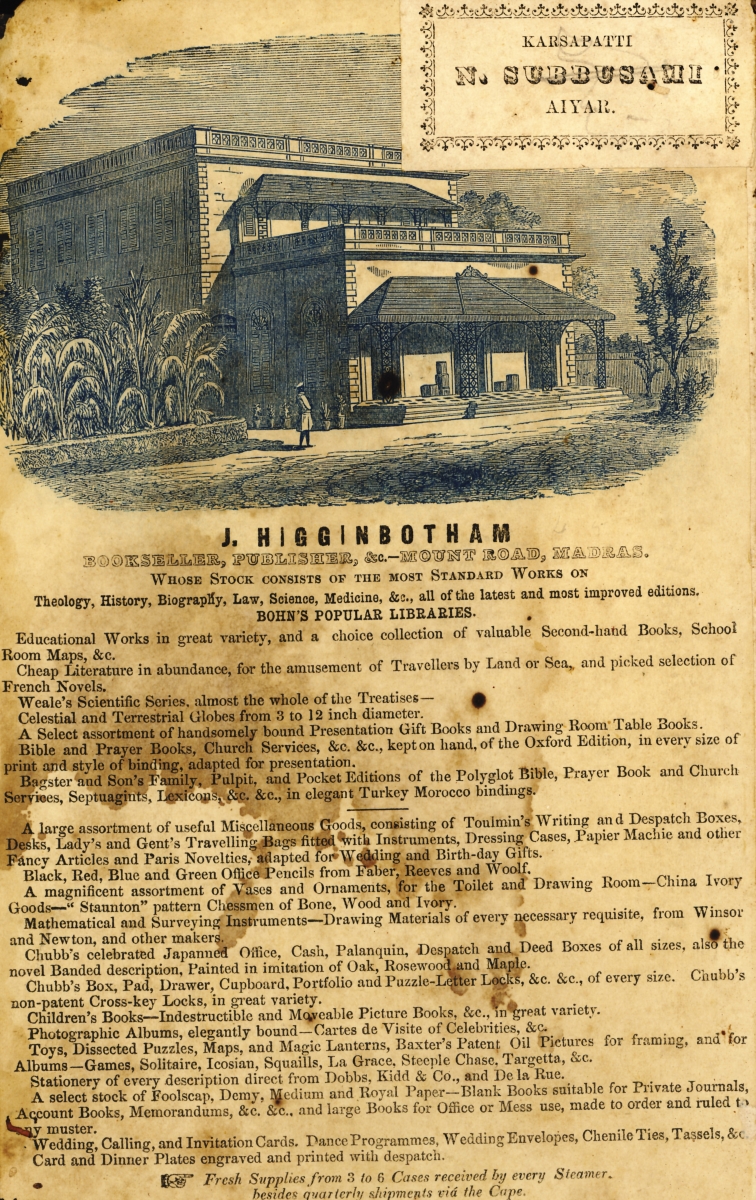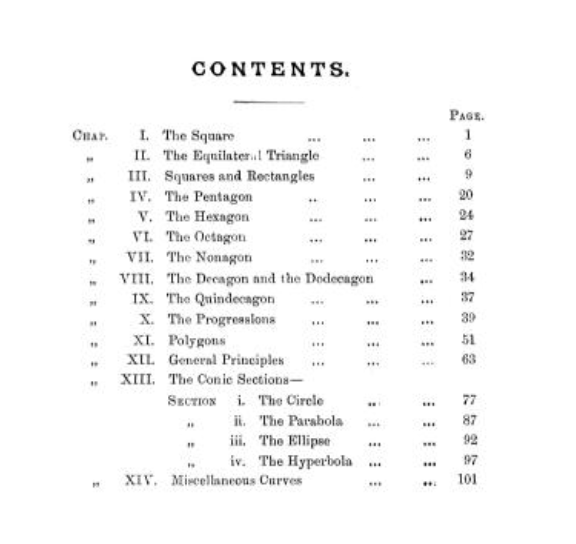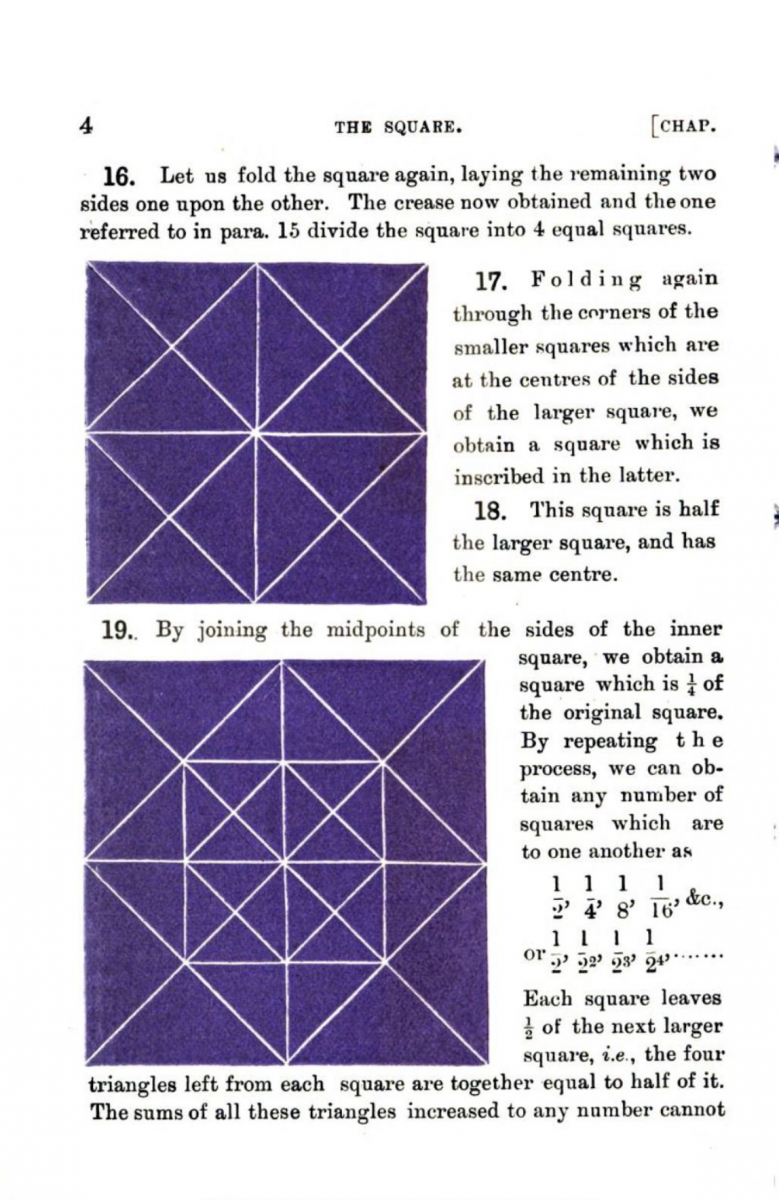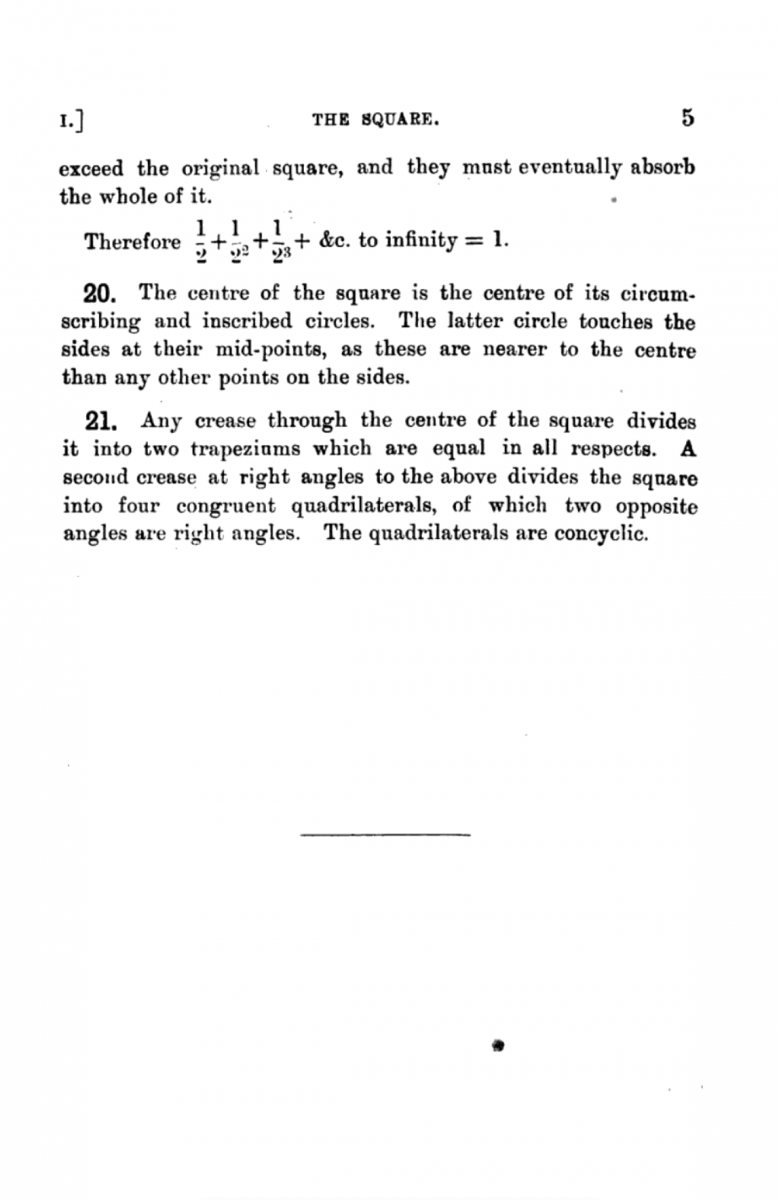- About MAA
- Membership
- MAA Publications
- Periodicals
- Blogs
- MAA Book Series
- MAA Press (an imprint of the AMS)
- MAA Notes
- MAA Reviews
- Mathematical Communication
- Information for Libraries
- Author Resources
- Advertise with MAA
- Meetings
- Competitions
- Programs
- Communities
- MAA Sections
- SIGMAA
- MAA Connect
- Students
- MAA Awards
- Awards Booklets
- Writing Awards
- Teaching Awards
- Service Awards
- Research Awards
- Lecture Awards
- Putnam Competition Individual and Team Winners
- D. E. Shaw Group AMC 8 Awards & Certificates
- Maryam Mirzakhani AMC 10 A Awards & Certificates
- Two Sigma AMC 10 B Awards & Certificates
- Jane Street AMC 12 A Awards & Certificates
- Akamai AMC 12 B Awards & Certificates
- High School Teachers
- News
You are here
Aiding the Teaching of Geometry and Affording Mathematical Recreation: Paper Folding in the Spirit of Sundara Rao of Madras – Rao's Geometrical Exercises in Paper Folding
As noted above, Sundara Rao was a clerk in the treasury department, not a teacher. Yet, in 1893 his book Geometrical Exercises in Paper Folding was published by Addison & Company in Madras. Even though Rao was too old to have attended a kindergarten himself and presumably had no experience working in one, he cited Froebel’s ideas as an inspiration. In the book’s introduction, Rao wrote: “The idea of this book was suggested to me by Kindergarten Gift No. VIII. – Paper-folding. The gift consists of 200 variously coloured squares of paper, a folder, and diagrams and instructions for folding. The paper is coloured and glazed on one side. The paper may, however, be of self-colour, alike on both sides” [Row 1893, p. 1]. He particularly recommended the kindergarten gift sold by Messrs. Higginbotham and Co., and he noted that a packet of 100 sheets of paper accompanied his book.
Rao did not say how he learned about kindergarten gifts. His specific mention of Higginbotham’s suggests that he investigated kindergarten material at that well-known bookstore, perhaps hoping to purchase supplies for his own family. He might also have learned of Brander’s ideas from other sources. His reference to “Gift No. VIII” suggests that he was not deeply immersed in Froebel’s theory—kindergarten gift VIII usually refers to drawing, while gift XVIII is paper folding. Of course, this may be a typographical error.

Figure 10. Advertisement for Higginbotham and Co., Madras, ca 1890.
Sriramy, “Higginbotham’s – a home for literature,” [Madras] Hidden Histories (17 January 2015).
Additionally, Sundara Rao specifically mentioned Hanumantha Rao’s First Lessons in the preface to his Geometrical Exercises in Paper Folding. He noted that his classmate had made frequent allusions to paper folding in the discussion of plane figures in his First Lessons, “but the hint has not been generally taken by teachers” [Row 1893, pp. iii–iv].
Rao had not sought to write an entire textbook on geometry; rather, his aim was to show how regular polygons, circles, and other plane curves could be folded or pricked on paper. This allowed him, as he wrote in his preface:
To introduce to the reader some well known problems of ancient and modern Geometry, and to show how Algebra and Trigonometry may be advantageously applied to Geometry, so as to elucidate each of the subjects which are usually kept in separate pigeonholes [Row 1893, p. iv].

Figure 11. Table of contents for Geometrical Exercises in Paper Folding. Internet Archive.
Rao’s book cut a wide swath. In the first nine chapters, he presented methods for folding paper to produce nine regular polygons. Some of the material he presented built toward such constructions. For example, he showed how to divide a line segment “in medial section” (i.e., so that the length of one section was the mean proportional between the length of the other section and the entire length). He would use this construction to fold an angle of π/5 radians, which proved most useful in constructing a pentagon.
At other times, Rao used his constructions to suggest theorems relating to both plane geometry and other mathematical topics. For example, his discussion of the square not only included an illustration of the Pythagorean theorem, but also presented the binomial theorem (algebraically as well as geometrically), and described a construction for finding the sum of the geometric series \(\sum_{n=1}^{\infty} (\frac{1}{2})^n\) [Row 1893, pp. 4–5].[10]


Figure 12. Pages 4–5 from Geometrical Exercises in Paper Folding. GoogleBooks.
Not all of Rao’s constructions involved paper folding alone. In a chapter on conic sections, he considered a parabola as the set of points equidistant from a point (the focus) and a line (the directrix). He assumed that the axis of the parabola was on a horizontal line that bisected a square, the focus was a point on that line, and the left edge of the square was part of the directrix. He folded a line parallel to the axis, and noted where it intersected the directrix. Then, folding down this parallel line, he found the point on it that was equidistant from the focus and the directrix. By pricking a series of such points, one obtained the outline of a parabola. From this relatively straightforward beginning, Rao went on to find such conic sections as the ellipse and the hyperbola. In a subsequent chapter, he considered more elaborate curves, including the cissoid, the conchoid, the ovals of Cassini, the logarithmic curve, the catenary, the cardioid, and the cycloid. I mention the pricking of points on a curve not only to illustrate the range of Rao’s interests but also because paper pricking was another of Froebel’s occupations for kindergarten students.
Rao’s comments about who might read his book focused on British India. In the preface, he pointed out that paper folding was not entirely foreign to those who wrote Sanskrit and Mahrati, as paper was folded vertically or horizontally to keep the lines and columns straight. Paper folding also had been associated with correspondence, with letters folded so that part of a sheet formed an envelope. Further, paper folding had been tied to making models of polyhedra in order to illustrate Euclid’s Book XI. And then, of course, there was the example noted earlier of Hanumantha Rao and his textbook. However, Sundara Rao had a wider audience in mind. As he wrote:
I have sought not only to aid the teaching of Geometry in schools and colleges, but also to afford mathematical recreation to young and old, in an attractive and cheap form. “Old boys” like myself may find the book useful to revive their old lessons, and to have a peep into modern developments which, although very interesting and instructive, have been ignored by the Madras University [Row 1893, p. vi].
As it happened, the faculty of Madras University showed relatively little interest in the book. However, as we shall see, Geometrical Exercises became a classic in the literature of mathematical recreations.
Peggy Aldrich Kidwell (National Museum of American History, Smithsonian Institution), "Aiding the Teaching of Geometry and Affording Mathematical Recreation: Paper Folding in the Spirit of Sundara Rao of Madras – Rao's Geometrical Exercises in Paper Folding," Convergence (March 2023)




